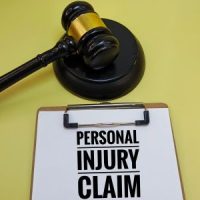How Inferences are used in Injury Trials

In law and in court, we tend to think that evidence must be immediate and direct; that we, as parties to the case, or the jurors hearing the case, cannot just assume a fact that is in evidence.
But on the other hand, a jury can, and should use its common sense, and there often isn’t direct evidence of a fact—often, we rely on the jury’s common sense, through inferences, to come to conclusions about a case, and to “fill in the blanks” of facts that are necessary.
Inferences are OK
As a simple example, imagine that you walk into a store, and you fall on ice cream. How long was the ice cream there, before you fell on it? You really don’t know—there’s no video, there’s no eyewitnesses, so it’s completely up in the air.
So, a jury can infer how long it was there by looking at it. A jury might see that it’s melted—an indication it’s been there a significant amount of time. But does it also have footprints in it, indicating that it’s been on the ground long enough for other people to walk through it and smudge it?
These things don’t give us an exact timeline—but they are facts that a jury can legally use to infer that the ice cream was on the floor for at least long enough for it to melt, and for a number of people to step through it.
Inferences Upon Inferences – They Aren’t Allowed
That’s an inference. But the law generally doesn’t allow you to make inferences upon inferences, or do what is known as stacking inferences.
Imagine our ice cream example above. You can legally infer that the ice cream has been there for the amount of time it takes ice cream to melt. But can you also then infer that nobody in the store must have ever inspected the area, or bothered to clean it up?
That answer would probably be no. You certainly can prove that in other ways—but you couldn’t say to a jury that they can just assume or infer that nobody looked at it because if they did it would have been cleaned up.
Get Your Evidence if You Can
Obviously, the best method of trying and proving cases is to get the evidence you need for your case in the first place–direct evidence. You don’t want to be forced to rely on inferences, but the law knows that often there is no definitive hard evidence of certain facts—and juries, as human beings, can use their judgment.
The key for a personal injury attorney is knowing what is an inference and what is a stacking inference, so that the attorney knows, in advance, what evidence he or she will need at trial.
Providing your injury case isn’t as easy as you think, but we can help you do it. Call the Boston personal injury lawyers at The Law Office of Joseph Linnehan, Jr. today at 617-275-4200 to see how we can help you.
